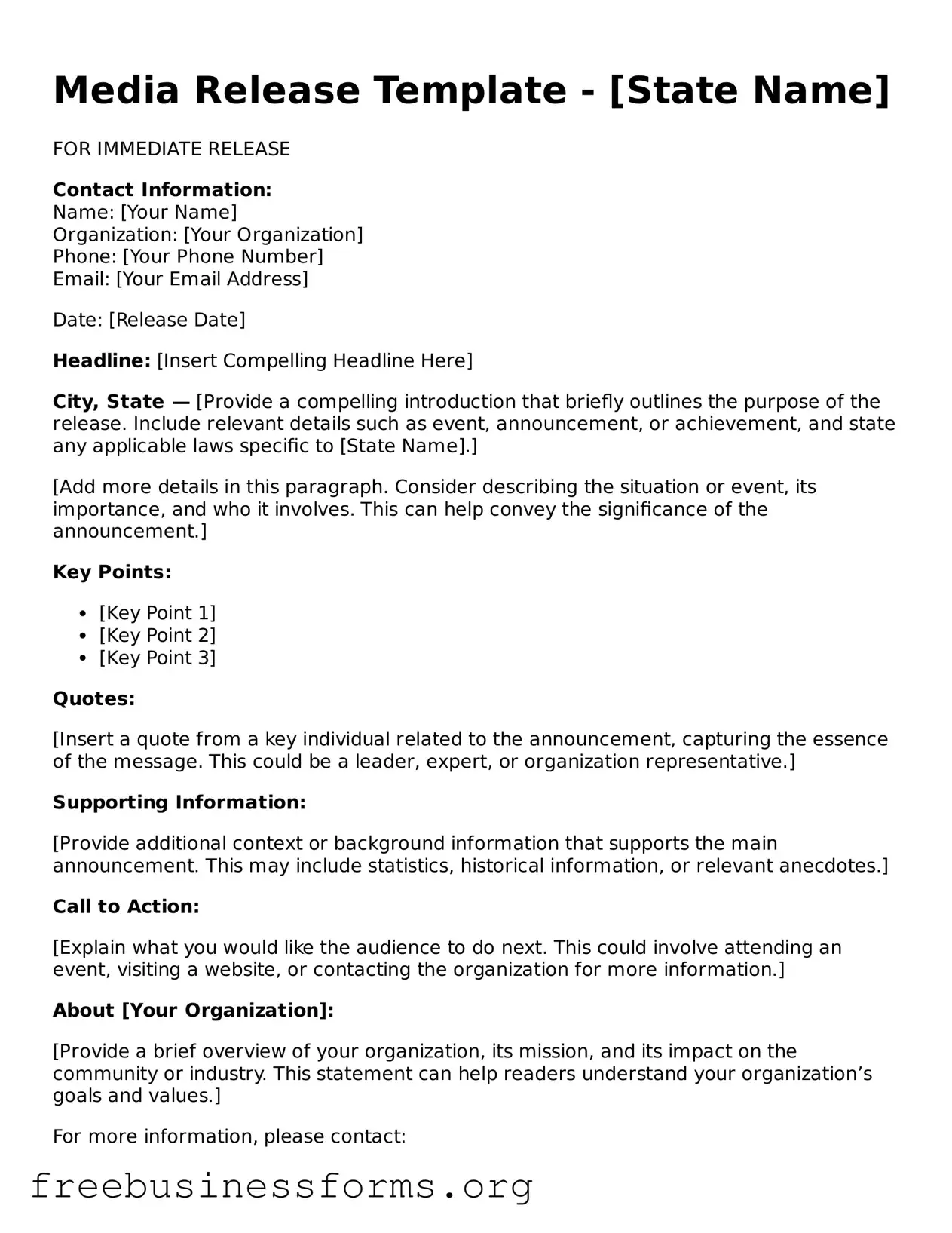Media Release Template - [State Name]
FOR IMMEDIATE RELEASE
Contact Information:
Name: [Your Name]
Organization: [Your Organization]
Phone: [Your Phone Number]
Email: [Your Email Address]
Date: [Release Date]
Headline: [Insert Compelling Headline Here]
City, State — [Provide a compelling introduction that briefly outlines the purpose of the release. Include relevant details such as event, announcement, or achievement, and state any applicable laws specific to [State Name].]
[Add more details in this paragraph. Consider describing the situation or event, its importance, and who it involves. This can help convey the significance of the announcement.]
Key Points:
- [Key Point 1]
- [Key Point 2]
- [Key Point 3]
Quotes:
[Insert a quote from a key individual related to the announcement, capturing the essence of the message. This could be a leader, expert, or organization representative.]
Supporting Information:
[Provide additional context or background information that supports the main announcement. This may include statistics, historical information, or relevant anecdotes.]
Call to Action:
[Explain what you would like the audience to do next. This could involve attending an event, visiting a website, or contacting the organization for more information.]
About [Your Organization]:
[Provide a brief overview of your organization, its mission, and its impact on the community or industry. This statement can help readers understand your organization’s goals and values.]
For more information, please contact:
[Your Name]
[Your Phone Number]
[Your Email Address]
### [END OF RELEASE]
